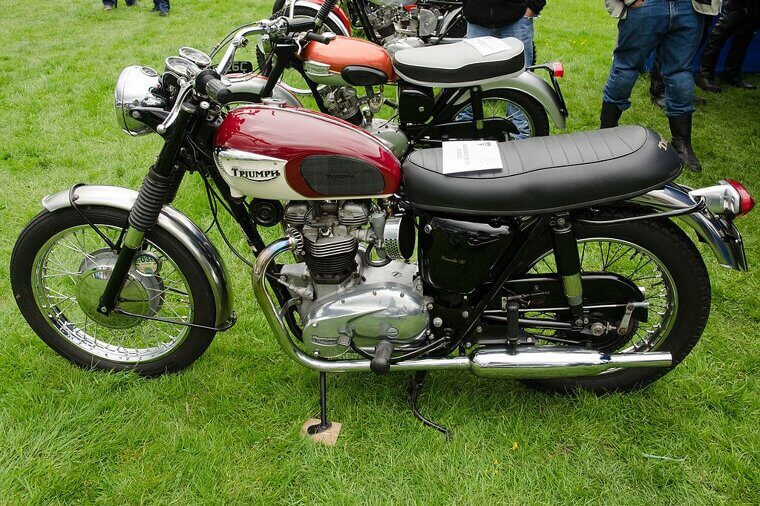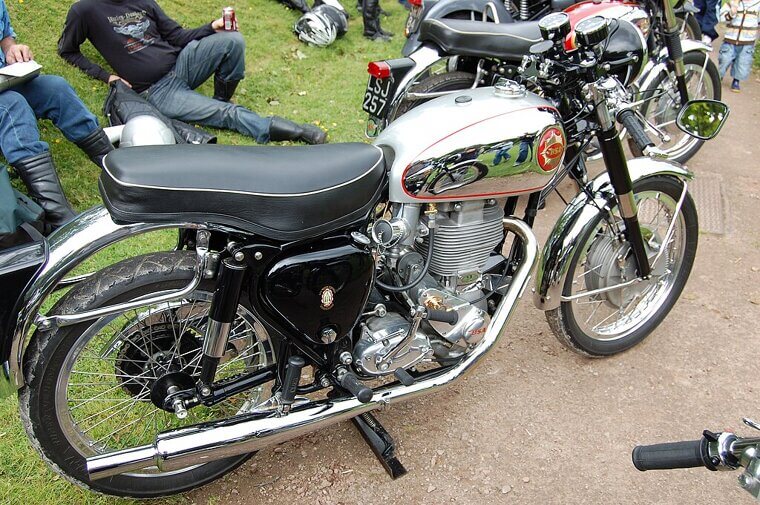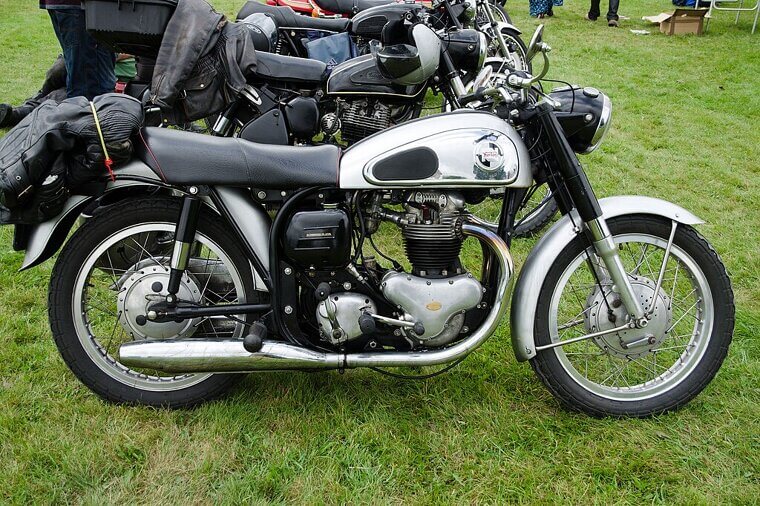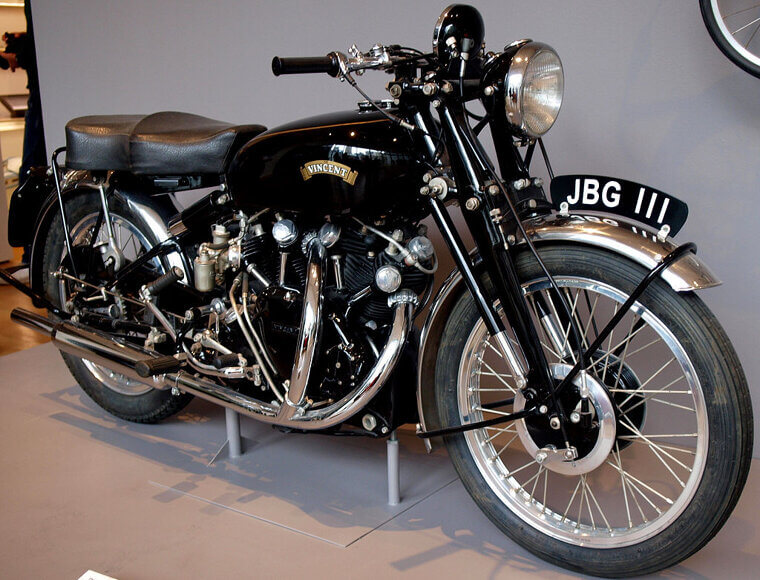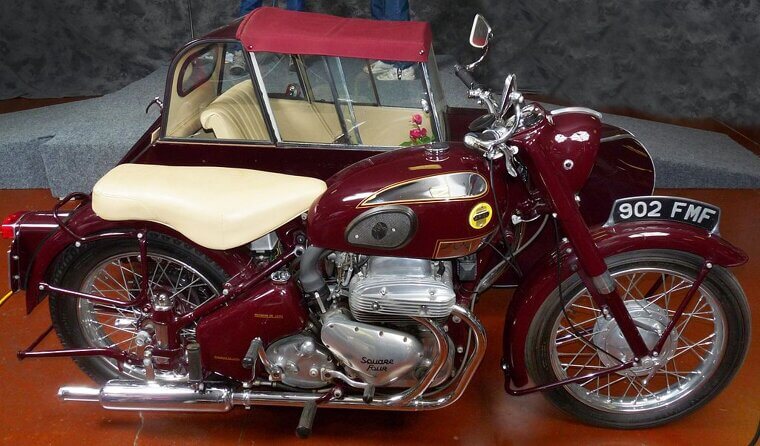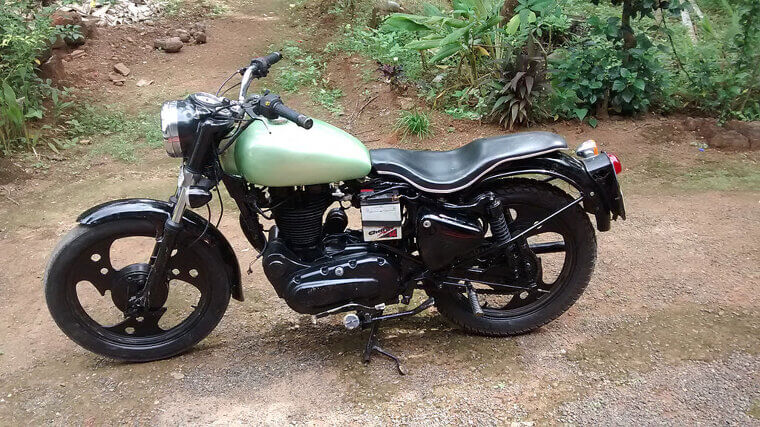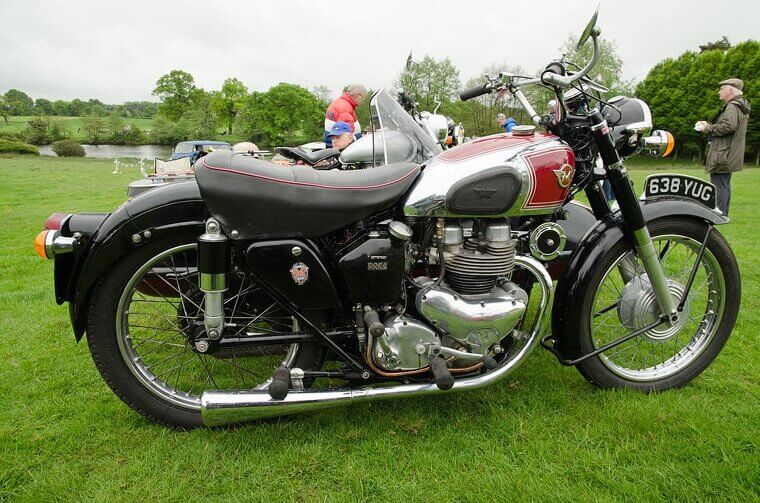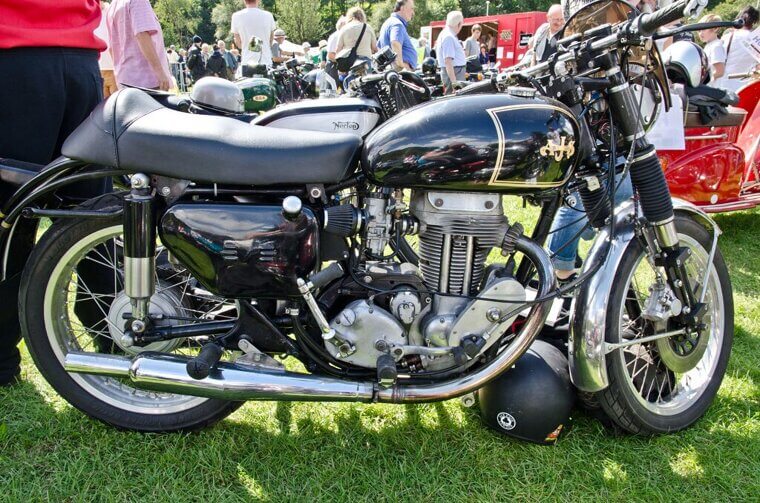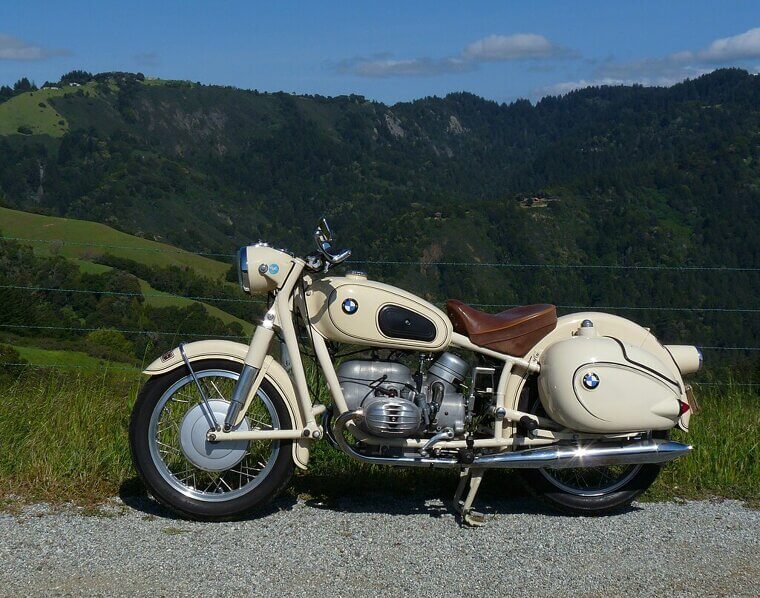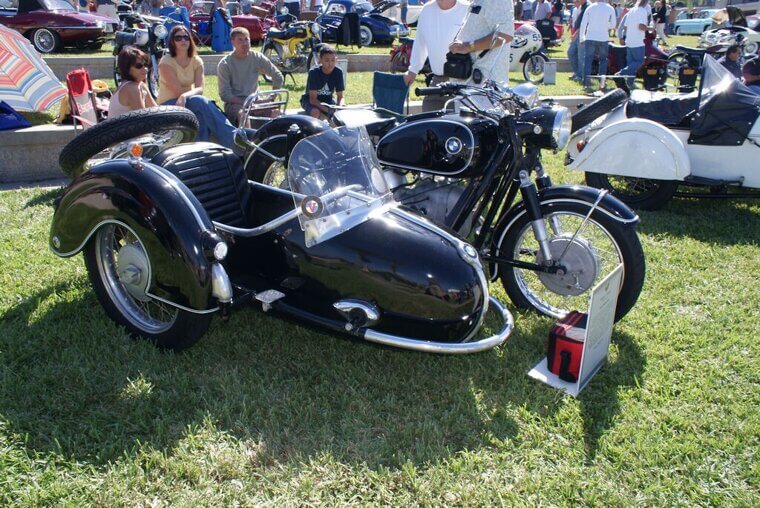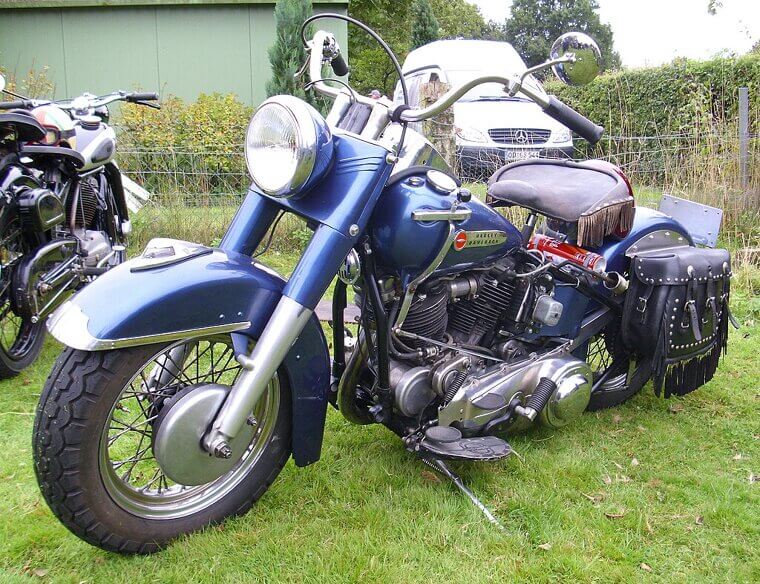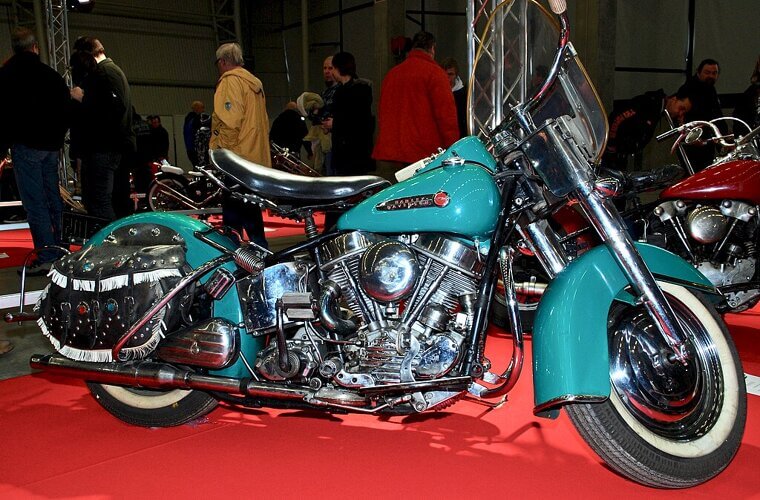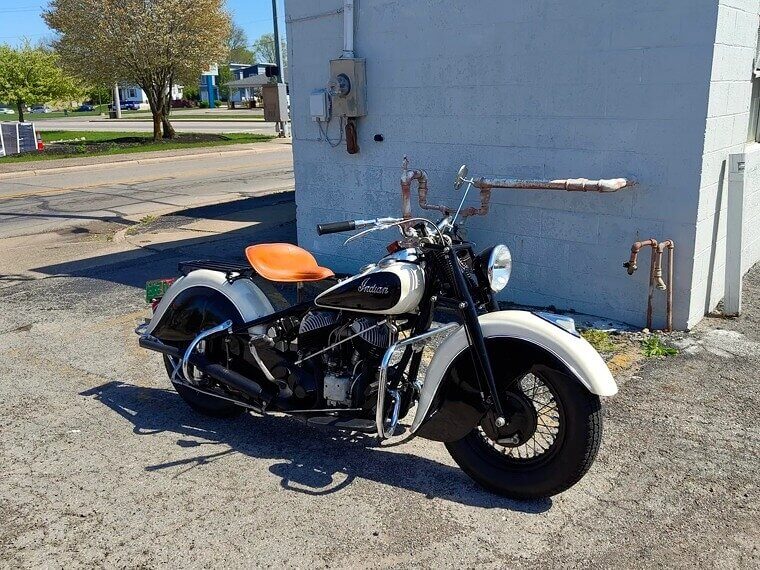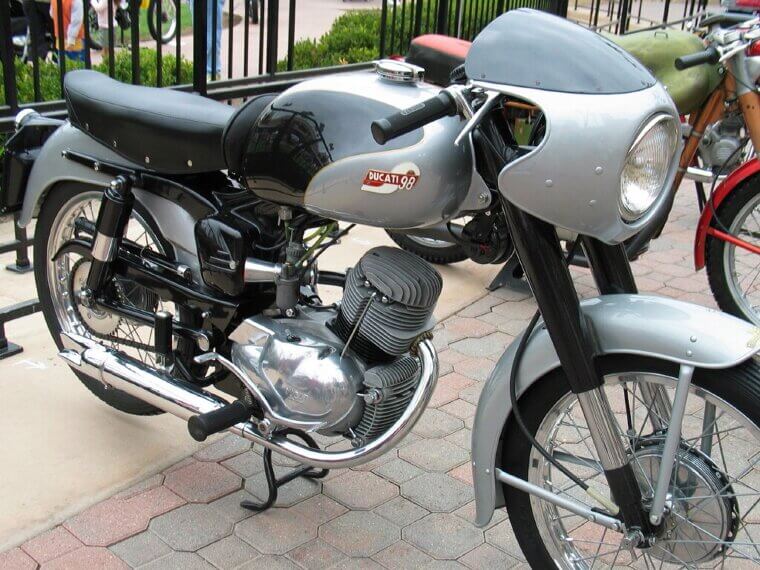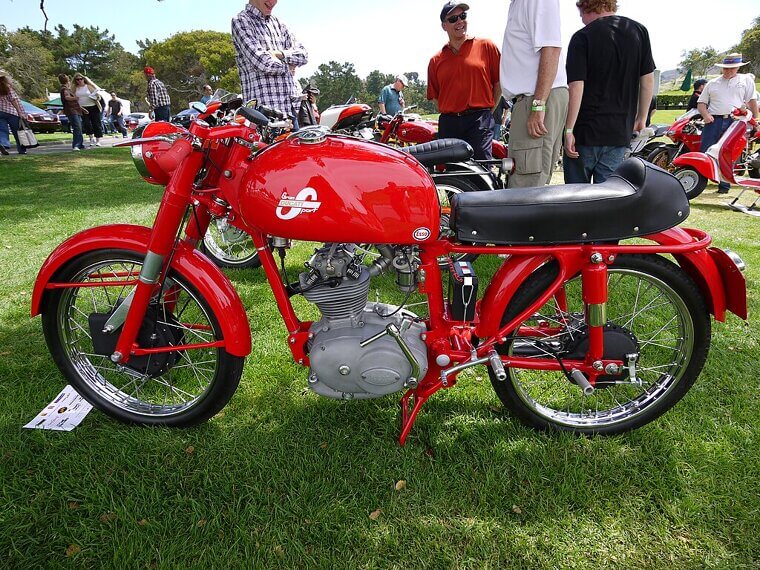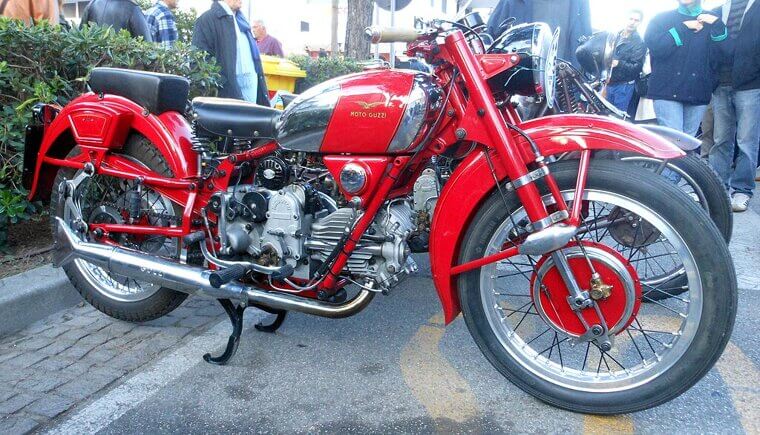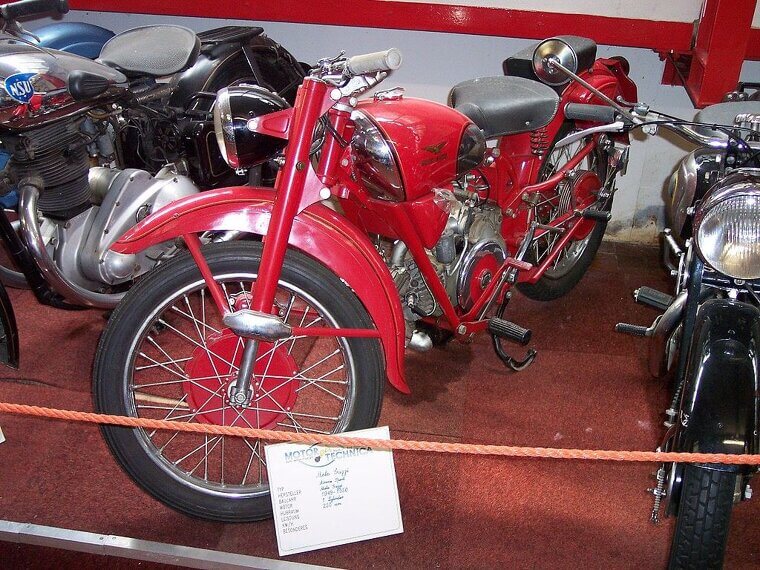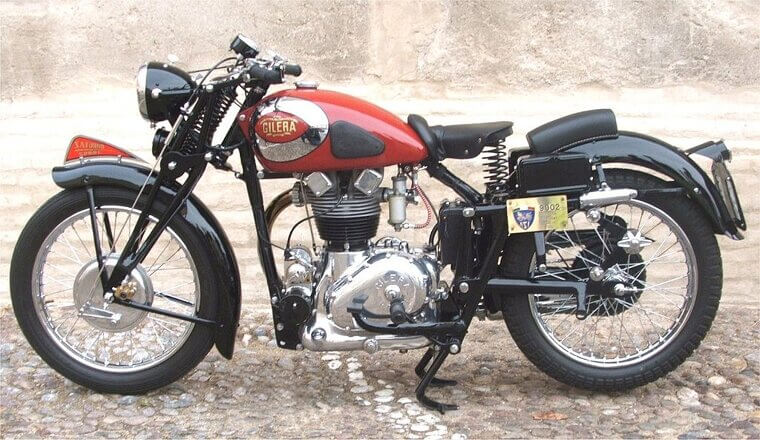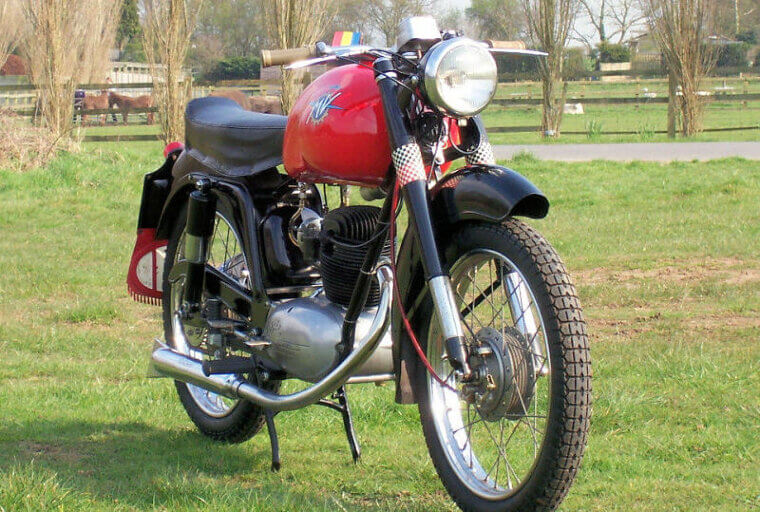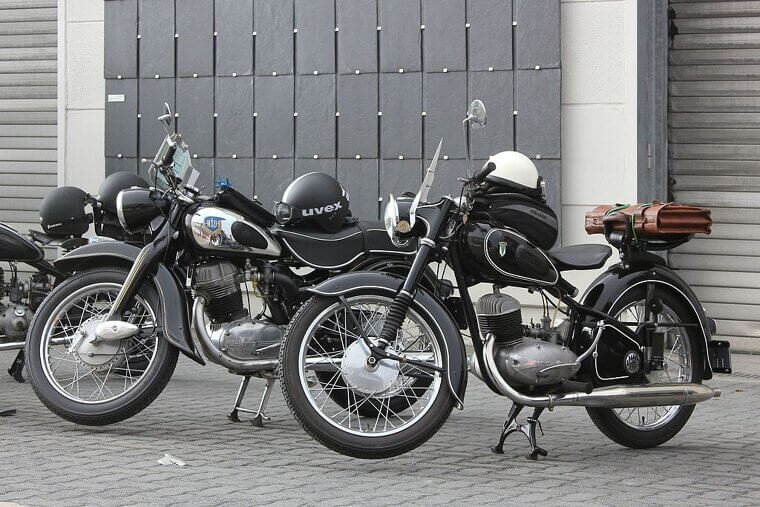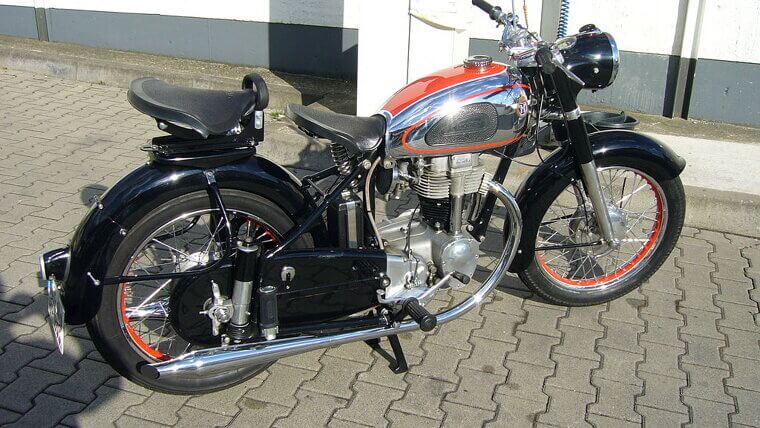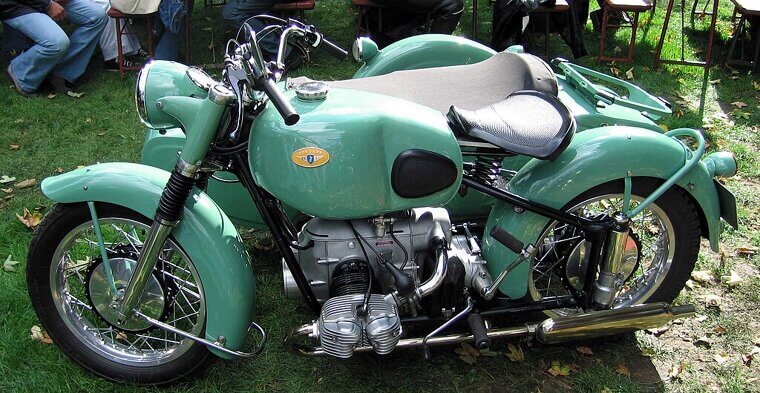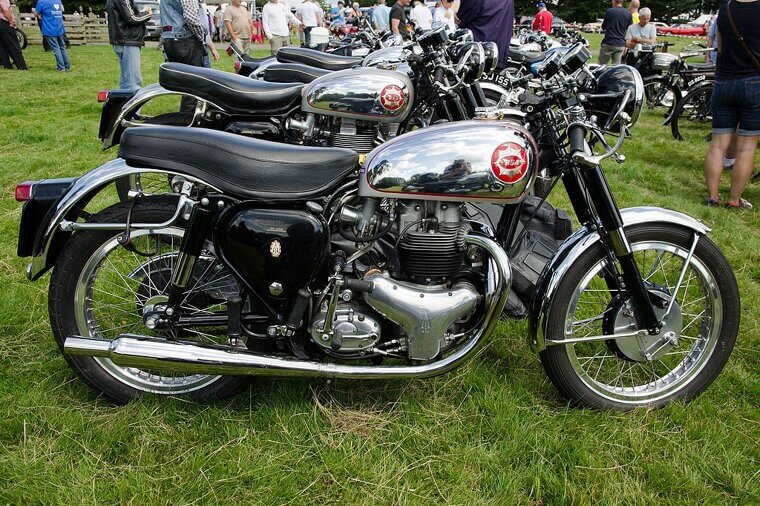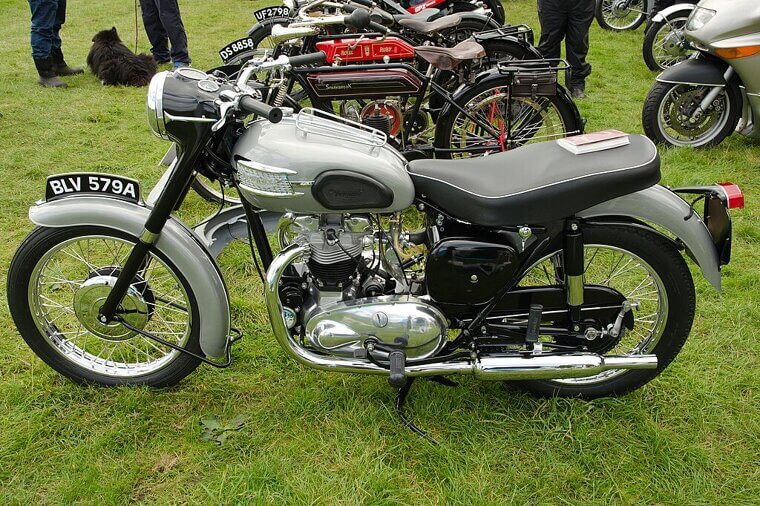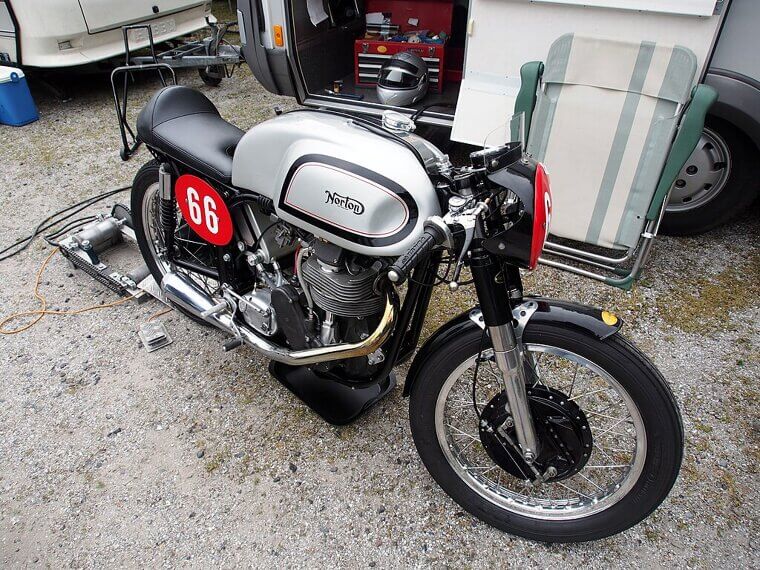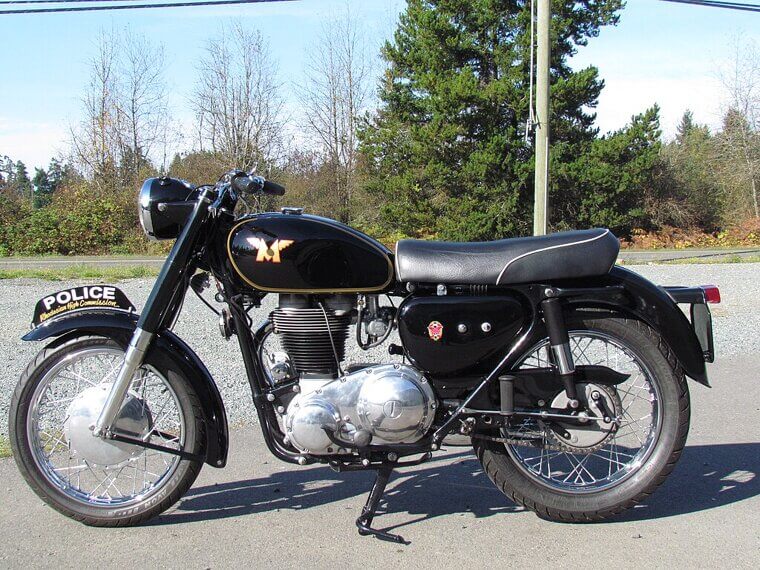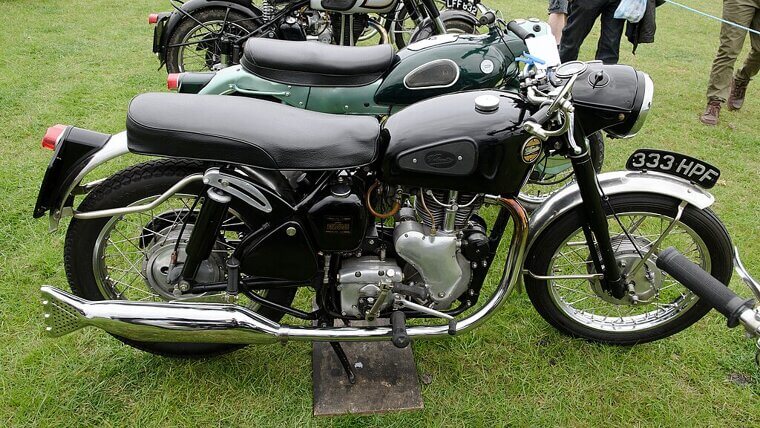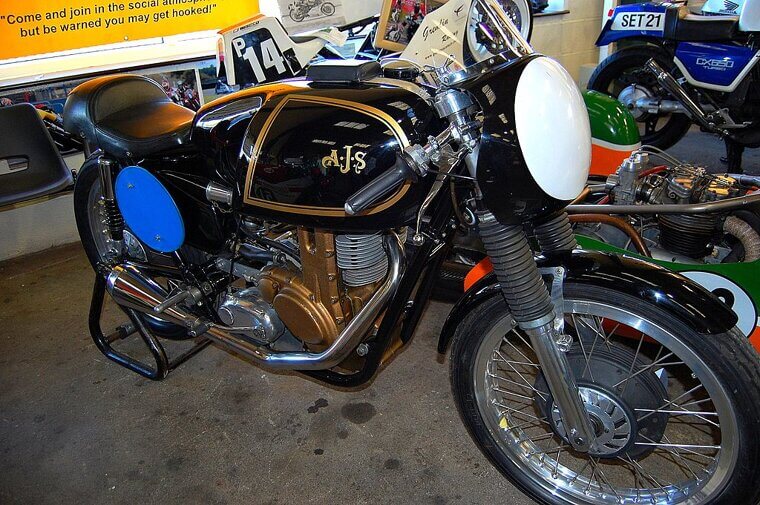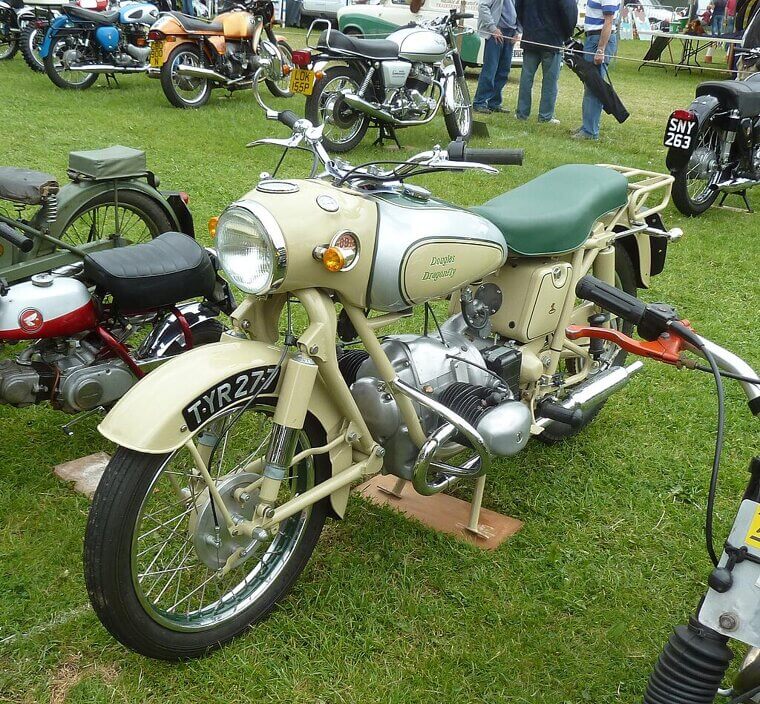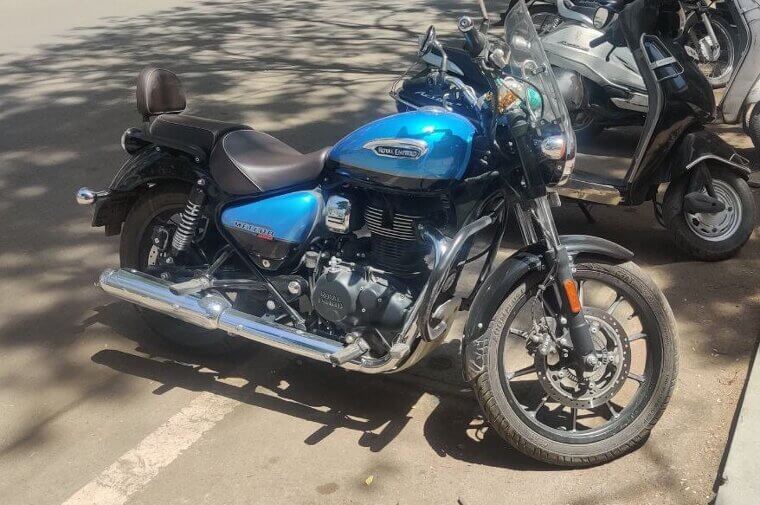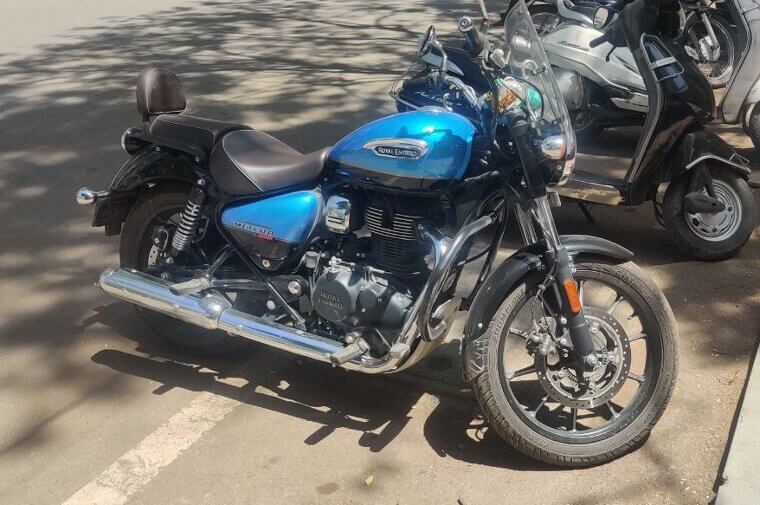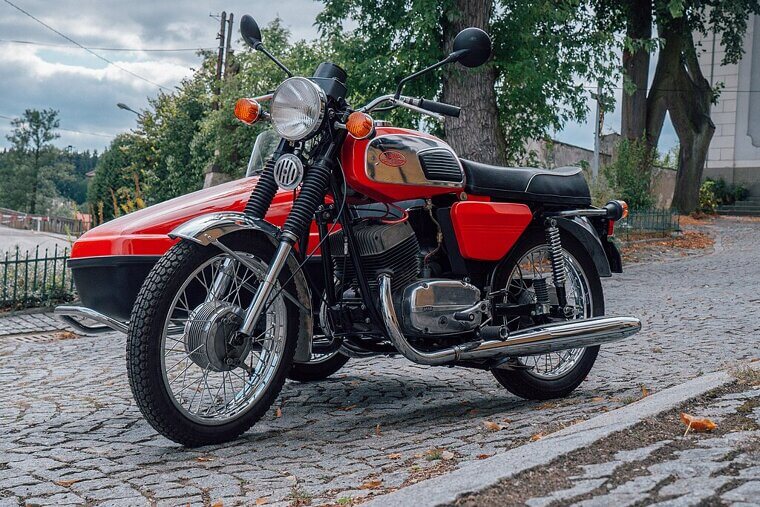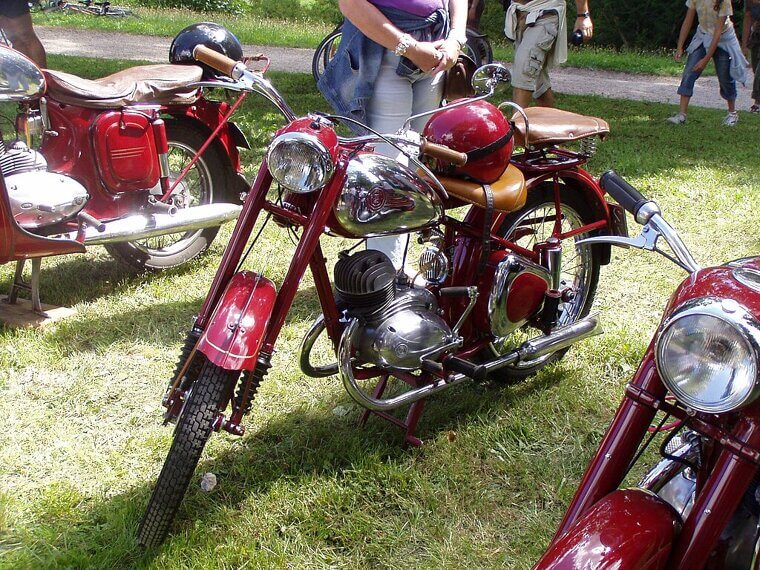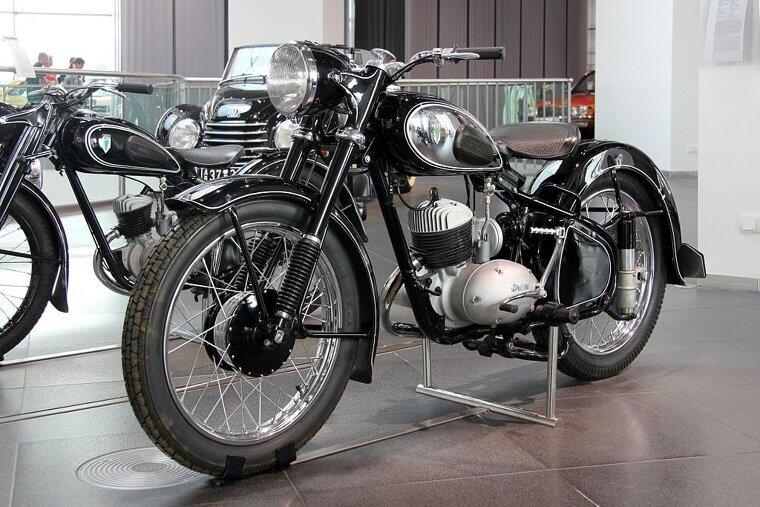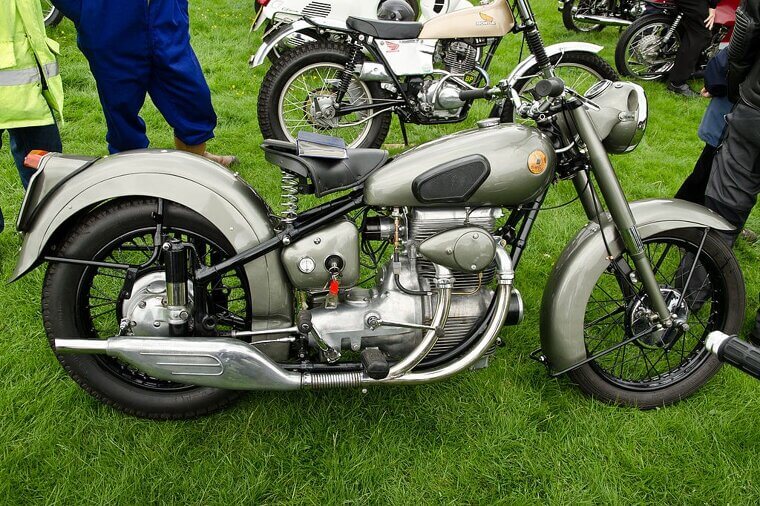Triumph Bonneville T120
The Bonneville T120 was Britain’s answer to the American dream: fast, loud, and impossibly cool! Named after the Bonneville Salt Flats, this twin-cylinder marvel turned suburban dads into café-racing legends overnight. Its throaty growl and polished chrome weren’t just for show; this was a bike that meant it.
BSA Gold Star DBD34
This is no mere motorcycle - the BSA Gold Star was featherlight, brutally fast, and had that iconic “Gold Star” badge earned by hitting 100 mph at Brooklands, it was Britain’s pride and every mechanic’s obsession. Start it wrong, and it’d bite; ride it right, and it sang.
Norton Dominator 99
The Dominator 99 sounded like something out of a comic book - and in truth, it looked the part. Sleek, muscular, and boasting Norton’s celebrated Featherbed frame, it handled corners like a dream. This was the gentleman’s performance bike. In the 1950s, few machines could make you feel quite so dashing.
Vincent Black Shadow
The Vincent Black Shadow wasn’t built; it was forged. The fastest production bike in the world when it debuted, this black-clad monster could do 125 mph in an era when most cars wheezed at half that. It looked like sin, sounded like thunder, and rode like a dare.
Ariel Square Four
The Ariel Square Four was the mechanical equivalent of a gentleman mixing whiskey with dynamite. Four cylinders arranged in a tidy square gave it power and refinement in equal measure. It cruised elegantly, purred politely, and yet, when goaded, roared like a lion in tweed trousers.
Royal Enfield Bullet 350
The Bullet 350 is living proof that good design never dies - it just thumps on forever. Born in the ’50s and still echoing through mountain passes today, this single-cylinder legend was rugged, reliable, and surprisingly poetic. It didn’t race time; it endured it, one piston stroke at a time.
Matchless G9 Super Clubman
With a name that sounds like a secret society for the stylishly unhinged, the Matchless G9 Super Clubman delivered both performance and panache. Its parallel twin engine purred with English confidence, and while it wasn’t the fastest bike at the café, it was always the smartest-looking.
AJS Model 18
If stoicism could ride a motorcycle, it’d choose the AJS Model 18. Solid, understated, and endlessly dependable, this British single didn’t need to shout to impress; it was a war veteran’s bike, trustworthy as a handshake and twice as firm. Kick it over, feel it chug, and let the world slow down.
BMW R50
The BMW R50 was what happened when Germany decided motorcycles should be engineered like Swiss watches. Boxer twin, shaft drive, and lines so clean they’d make Bauhaus architects weep - it wasn’t a hooligan’s ride, it was a gentleman’s machine. Quietly powerful, impeccably balanced, and dressed in understated elegance.
BMW R69
Think of the R69 as the R50’s athletic sibling; the one who traded pipe and slippers for a leather jacket and the Autobahn. Smooth, fast, and refined, it offered luxury and velocity, which was rare back then. Riders didn’t just cruise - they glided, looking infuriatingly composed while everything else rattled.
Harley-Davidson Hydra-Glide
If motorcycles could swagger, the Hydra-Glide would do so with Elvis on the jukebox. Those hydraulic forks revolutionized comfort, and that big twin engine turned highways into dance floors. It wasn’t about top speed - it was about owning the road, chrome first, worries last.
Harley-Davidson Panhead
The Panhead wasn’t just a bike - it was the birth of a culture. Its gleaming rocker covers looked like upturned pans, but they hid the soul of postwar America. It was a rebel’s statement and the muse of every grease-stained dreamer who ever heard the word “freedom” roar.
Indian Chief (1950)
Majestic in name and in motion, the Indian Chief carried a legacy as proud as its fenders were wide. It blended Native American iconography with all-American thunder, creating something both spiritual and mechanical. When that skirted front wheel rolled by, heads turned and hearts raced.
Ducati 98
The Ducati 98 wasn’t about raw power, it was about style. It buzzed through Italian streets like a Vespa’s cooler cousin, charming riders with its light frame and spirited hum while making every commute feel brilliantly simple. It was la dolce vita on two wheels.
Ducati 125 Sport
Small engine, big personality - the Ducati 125 Sport was a bantamweight bruiser that refused to act its size. Its overhead cam engine sang at high revs, proving you didn’t need muscle to make magic. It turned errand runs into escapades. Every Italian teenager dreamt of red paint and racing stripes.
Moto Guzzi Falcone
The Falcone was Moto Guzzi’s ironclad handshake to the world: simple, reliable, and proudly Italian. Its exposed pushrod engine looked like sculpture, and its thumping single-cylinder rhythm felt like an espresso shot to the soul. No rush, no nonsense, just effortless confidence.
Moto Guzzi Airone
Translated to “heron,” the Airone was as graceful as its namesake, and nearly as enduring. Lightweight, charmingly modest, and blessed with Guzzi’s signature engineering, it was the everyday hero of postwar Italy. Soldiers, students, and dreamers alike rode it with pride, its steady pulse stitching the country back together.
Gilera Saturno
Looking like it was carved from determination and gasoline fumes, the Gilera Saturno was born for racing, but civilized just enough for the road! It married Italian style with brute strength and its single-cylinder growl was pure theatre - a one-man opera of combustion and class.
MV Agusta 125 Turismo
This ride was proof that small bikes could still feel glamorous. The MV Agusta’s 125 Turismo wore its curves like a movie star, its chrome winking in every reflection. Though modest in power, it had charisma to burn and made even the milk run feel like a parade.
NSU Max
The NSU Max was Germany’s technical show-off - ingeniously built, beautifully balanced, and quietly smug about both. Its overhead camshaft design gave it smooth, reliable power, and it handled like a dream. It wasn’t flashy, but engineers loved it and riders trusted it with their whole hearts.
Horex Regina
A bike with queenly poise and a boxer’s punch! The Horex Regina had elegant curves, crisp engineering, and a sound that made every café patron glance up. It wasn’t as famous as some of its rivals, but among connoisseurs, it was whispered about with reverence.
Zündapp KS601
Nicknamed the “Green Elephant,” the Zündapp KS601 was big, bold, and unapologetically overbuilt. It rumbled through postwar Germany like a tank that decided peace was more fun than battle. Sidecar attached, it became a family vehicle; solo, it was a brute in a bow tie - strong, dependable, and charmingly ridiculous.
BSA A10 Super Rocket
The Super Rocket was BSA’s middle finger to anyone who thought British bikes were delicate. A parallel-twin thunderbolt wrapped in chrome and swagger, it could easily hold its own against Triumph’s best. It didn’t just go fast; it looked fast standing still.
Triumph Tiger T110
The Tiger T110 was the Bonneville before the Bonneville; a prelude to cool. Born from Triumph’s obsession with speed, it had guts, gleam, and a growl that made hearts skip. It wasn’t a bike you rode to arrive; it was a bike you rode to escape.
Norton Manx
The Norton Manx wasn’t built for roads, it was born for racetracks and legends! Its Featherbed frame, precision-tuned single, and stripped-down beauty made it the darling of the Isle of Man TT. Riders didn’t simply pilot a Manx - they merged with it.
Matchless G80CS
A roughneck cousin of the genteel British singles, the Matchless G80CS was a scrambler with dirt on its tires and mischief in its grin. Built for the desert races of California, it was pure muscle and minimalism. No frills, no fuss, just a booming thump and a grinning rider.
Velocette Venom
With a name like Venom, you’d expect danger… and it delivered. The Velocette Venom was sharp, sleek, and surprisingly civilized between bursts of brilliance. In the right hands, it could top the ton, yet it sipped fuel like a nun at a wine tasting.
AJS 7R “Boy Racer”
The AJS 7R didn’t earn its nickname in jest - this lithe, single-cylinder racer was the teenage dream of every would-be champion. Lightweight, temperamental, and thrilling, it taught a whole generation of racers how to dance with danger. It didn’t forgive mistakes - but oh, how it rewarded bravery.
Douglas Dragonfly
A charmingly off and eccentric bike, the Douglas Dragonfly’s horizontally opposed twin engine gave it balance and character in equal measure. It didn’t scream for attention; it hummed along happily, a well-mannered rebel that made eccentricity look utterly dignified.
Royal Enfield Meteor
Before the Interceptor stole the spotlight, there was the Meteor - Royal Enfield’s gleaming powerhouse. It blended British grace with bold new muscle, a highway cruiser built for long, confident strides. With that deep, rhythmic thump, it felt less like riding and more like gliding through history itself.
BMW R51/3
The BMW R51/3 was the quiet genius of the decade - a bike that didn’t need to shout to be brilliant. Postwar precision in every bolt, it was smooth as cream and solid as stone. Reliable, refined, and timeless, it was less of a machine and more of a kept mechanical promise.
Jawa 350
The Jawa 350 was the people’s hero of Eastern Europe: affordable, tough, and oddly romantic. Its two-stroke chatter echoed across city squares and countryside roads alike. It wasn’t about luxury or flash; it was about freedom. If you owned one, you rode - and that was everything.
CZ 125
The CZ 125 was a mischievous little streak of Czech ingenuity - small enough to slip through traffic, loud enough to make sure everyone noticed. Lightweight, lively, and unpretentious, it became a racing darling. It wasn’t trying to impress anyone yet, somehow, it impressed everyone.
DKW RT 250
The DKW RT 250 was Germany’s workhorse; humble in looks but heroic in duty. It hauled, it raced, it commuted, and it just kept going. Postwar Europe leaned heavily on its reliability, and it never once complained. It was dependable, enduring, and quietly proud.
Sunbeam S8
Ah, the Sunbeam S8 - refined, unusual, and just a bit posh. Its inline twin engine purred like an old cat with secrets, and its styling whispered of sophistication rather than speed. It wasn’t built to conquer racetracks; it was built to charm.

